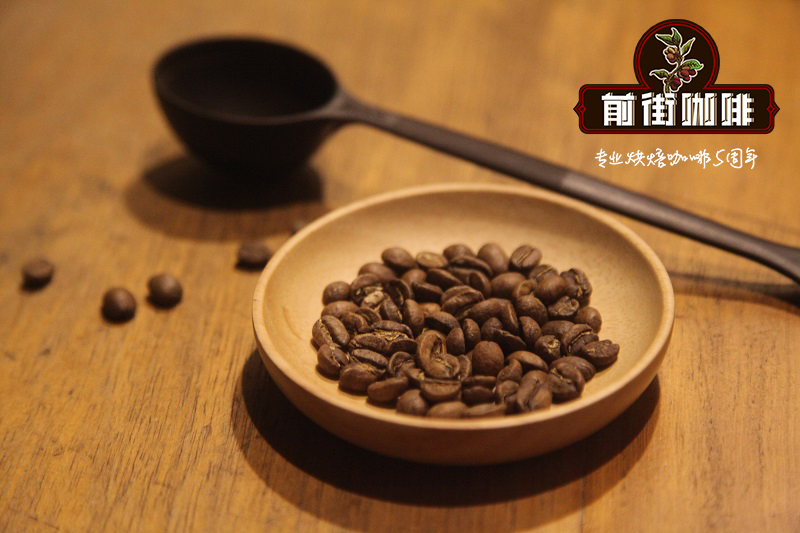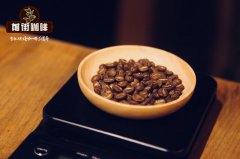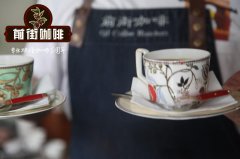Why does Kenyan coffee taste unique, clean and complex? How to make coffee with coffee powder?
Why is Kenyan coffee unique, clean and complex? How to make coffee with coffee powder?

Kenya uses a unique washing process known worldwide as the "Kenyan double fermentation" or "double soak" washing method, which provides coffee with amazing flavor complexity and exceptional consistency.
1. growth environment
Most of Kenya's coffee is grown from the Kenyan mountains to nearby Nairobi, areas with high elevations, warm climates and fertile soils that are ideal for growing Arabica coffee.
2. main varieties
Two well-known varieties from Kenya, SL28 and SL34, are a blend of bourbon, which brings Kenya's distinctive blackcurrant and vanilla flavours. SL28 and SL34 are both productive under healthy conditions, but have the lowest resistance and are less resistant to cold.
There is also a newer Kenyan variety, K7, which is highly immune to the disease, but it is not of the same quality as SLs. Ruiru11 is a high-yielding plant, resistant to leaf rust and CBD. It is a blend of the "Rume Sudan" and "Hibrido de Timor" varieties of the "Boma" plateau, as well as a blend of "SL28" and "SL34" to enhance flavor. "Batian" is a new high-yielding disease-resistant variety released by the Coffee Research Foundation in Kenya in 2010. It is understood that its taste is equivalent to SL.
In addition to the unique combination of climate, geography, soil and variety, Kenya's unique processing system allows coffee to be produced with incredible quality and special processing methods to give coffee its unique flavor. Kenya coffee from seeds to cherries, to parchment, to coffee beans, through special processing methods, all the best potential of the beans to play all the good flavor.
3. featured
The first step in getting green coffee beans to customers is planting the seeds. After three to five years of attention and careful conservation, the productivity of coffee trees is already high. Cooperative or farm farmers use traditional methods of planting, pruning, sorting, pulping and processing to ensure that each coffee tree is well cared for each year. At harvest time, farmers hand-pick ripe and sweet coffee cherries.
4. processing
Part of the uniqueness of Kenyan flavor is due to the highly controlled processing and sorting. Strict sequencing is done at each stage of processing and during dry grinding to create a final product with a very consistent flavor.
Before coffee production begins, coffee cherries are sorted from defective, excessive and immature coffee cherries.
The coffee cherries are then sent to a factory where the ripe cherries are sorted. They are usually peeled directly by a large number 3 or 4 decorticator, from which coffee cherries are referred to as "parchment".
When the low-density beans are removed, the high-quality beans are washed into a separate fermentation tank, where the parchment beans ferment overnight in large concrete containers, breaking down pectin so that it can be easily removed during washing. Depending on the temperature, fermentation takes 12-16 hours.
Farm workers rub parchment with their hands to detect the degree of fermentation. If parchment is overfermented, its subtle flavor characteristics will be destroyed, so it must be washed within a certain time to stop the fermentation process.
The parchment beans are washed and fermented twice in fresh water every few hours to remove residual pectin, where they are further sorted by density. The lower-density beans are sorted again and sold as lower-quality coffee, while the higher-density parchment beans are blocked by valves in the waterways while workers sweep the beans along the channels with pulp to move them.
Once the washing process is complete, move the beans to a drying bed. To ensure uniform drying, the beans are sorted and stirred until the moisture content reaches 11-13%.
In addition, some processing plants carry out mechanical brushing and elution of pectin on parchment paper after floating screening and peeling, instead of fermenting and removing pectin in fermentation tank, and then parchment beans are further washed, which ensures the cleanliness of coffee beans, shortens the fermentation process, and further retains the original flavor of coffee. The washed coffee beans are moved to a drying bed to reduce the moisture content to a stable value prior to storage.
5. Coffee Features
Kenya is dominated by Arabica cultivation. Kenya coffee has a clean cup character typical of East African coffee, sometimes showing citrus, grapefruit and other flavors. In addition, many Kenyan coffees are considered to have a wine-like taste.
6. grade standard
Coffee beans are graded according to characteristics, most notably size. Although many larger beans are considered excellent quality, this is only one of many factors that determine high-quality coffee. Although standards for grading coffee have been issued, they are not the only ones. The Kenya Coffee Board considers coffee grading to be an "art" and here are the Kenya coffee grades:
Level Details
PB Peaberries
AA sieve: 17, 18 mesh =7.2mm
AB sieve: 15, 16 mesh = 6.6 mm
C sieve: 14, 15 mesh
E beans: Coffee beans that are screened out during processing, they are usually defective and are called "ears". This category also includes some large round beans.
TT Light beans selected from air currents in AA and AB classes
T less than TT, lots of debris. It is a light bean selected from C grade by airflow.
UG Unrated: None of the beans meet any of the official criteria
Country-specific grades-sorted by size, AA largest (17/18ss), AB (15/16ss), PB (Peaberry-16ss or 4.74mm).
Kenya coffee's impressive clean, invigorating flavor is hard to resist. In addition to Kenya's favorable high altitude and varieties, there are also exquisite coffee processing techniques.
Kenya coffee is characterized by its unique coffee flavor performance, such as clean, bright, active acid value and black currant fruit characteristics, Kenya coffee is definitely an indispensable unique experience in your coffee journey.
Important Notice :
前街咖啡 FrontStreet Coffee has moved to new addredd:
FrontStreet Coffee Address: 315,Donghua East Road,GuangZhou
Tel:020 38364473
- Prev

Kenya, how's the Kenyan coffee? Can Kenyan coffee be brewed directly by hand?
KenyaAB, how's the Kenyan coffee? Can the coffee powder be made directly? Hunter barista's flavor notes: dry aroma with berry and light floral aromas; full-bodied black plum on the mouth, soft and charming acidity, sweet blend with sugarcane, a touch of acidity of blackcurrant and grapefruit in the mouth, micronuclei
- Next

Why is the bean grinder cleaned regularly? Cleaning and maintenance of Cabranza Capresso CP-560 bean grinder
Why does the bean grinder clean and replace the blade regularly? Cleaning and maintenance of Cabranza Capresso CP-560 bean grinder I use a small brush to clean the bean grinder every day, but sometimes some fine powder is still stuck in the cracks, especially under the turntable of the knife set. If some come out at 05:00, I can't finish brushing it. In addition, if you grind too many deep-roasted coffee beans, the whole grinder will turn black.
Related
- Detailed explanation of Jadeite planting Land in Panamanian Jadeite Manor introduction to the grading system of Jadeite competitive bidding, Red bid, Green bid and Rose Summer
- Story of Coffee planting in Brenka region of Costa Rica Stonehenge Manor anaerobic heavy honey treatment of flavor mouth
- What's on the barrel of Blue Mountain Coffee beans?
- Can American coffee also pull flowers? How to use hot American style to pull out a good-looking pattern?
- Can you make a cold extract with coffee beans? What is the right proportion for cold-extracted coffee formula?
- Indonesian PWN Gold Mandrine Coffee Origin Features Flavor How to Chong? Mandolin coffee is American.
- A brief introduction to the flavor characteristics of Brazilian yellow bourbon coffee beans
- What is the effect of different water quality on the flavor of cold-extracted coffee? What kind of water is best for brewing coffee?
- Why do you think of Rose Summer whenever you mention Panamanian coffee?
- Introduction to the characteristics of authentic blue mountain coffee bean producing areas? What is the CIB Coffee Authority in Jamaica?

